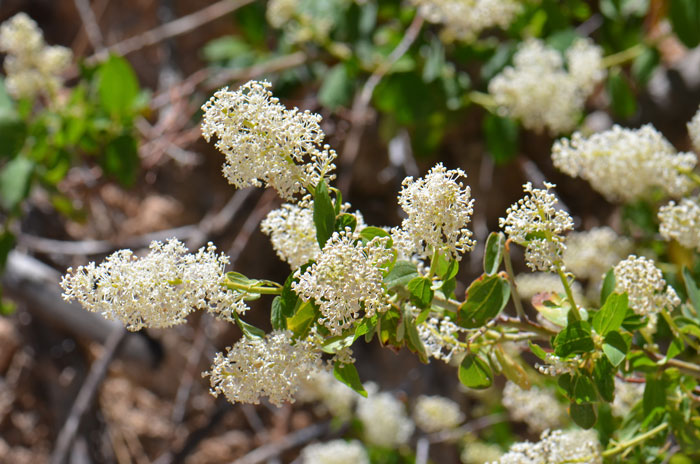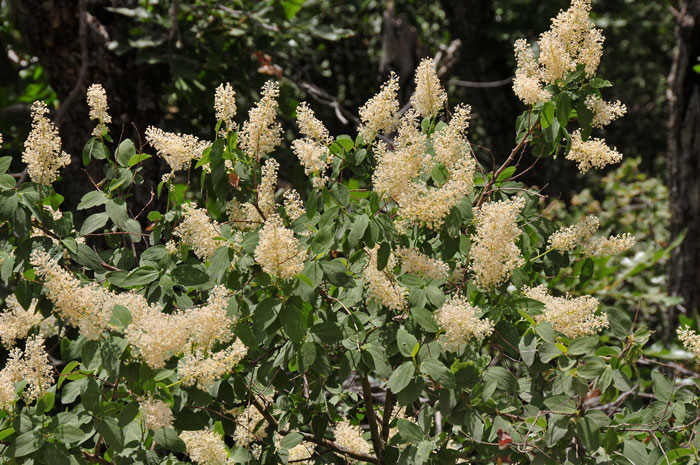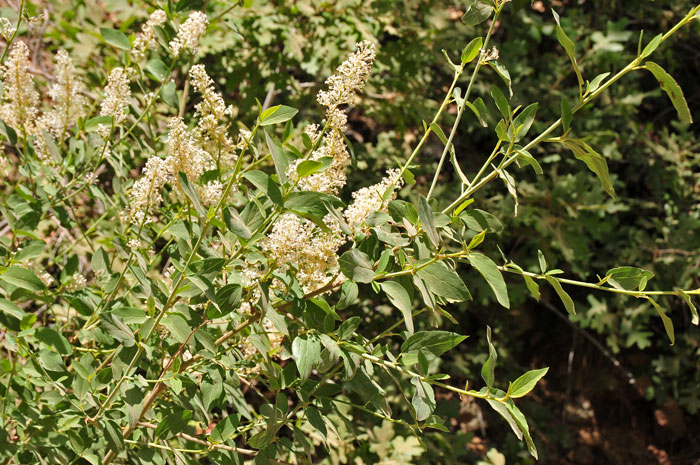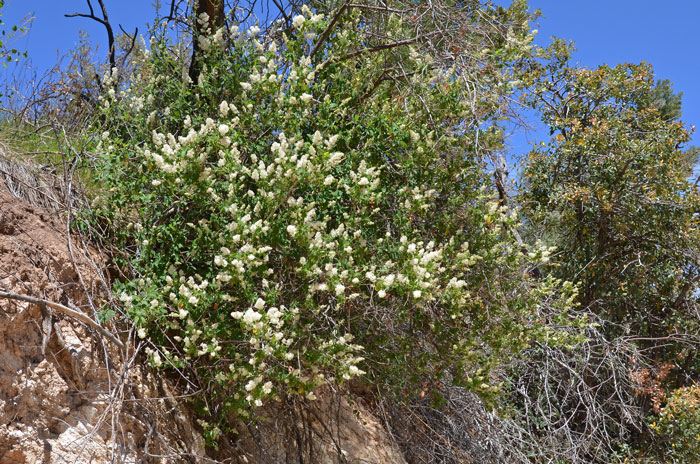Ceanothus integerrimus, Ceanothus Deerbrush




Scientific Name: Ceanothus integerrimus
Common Name: Ceanothus Deerbrush
Also Called: Deerbrush, Deerbrush Ceanothus (Spanish: Lila)
Family: Rhamnaceae or Buckthorn Family
Synonyms: (Ceanothus andersonii Parry, Ceanothus californicus Kellogg, Ceanothus integerrimus var. californicus, Ceanothus integerrimus var. macrothyrsusS, Ceanothus integerrimus var. puberulus)
Status: Native
Duration: Perennial
Size: Up to 8 feet or less; up to 12 feet in California.
Growth Form: Shrub; ascending-erect; glabrous or appearing so, twigs rounded and not rigid, twigs and stems yellow to pale green, bark gray.
Leaves: Green, bright green; alternate, up to 2 inches or more long; deciduous; petioled approximately ⅓ inch long; bright green above (adaxial), paler below (abaxial); leaf shape variable, lanceolate, broadly elliptic or ovate; margins entire or very nearly so.
Flower Color: White or whitish, bluish, pink; showy flowers in conical clusters up to 6 inches; feathery panicles, raceme-like.
Flowering Season: May to October; May to July in Texas.
Elevation: 3,500 to 7,500 feet; 900 to 6,500 feet in California.
Habitat Preferences: Dry slopes, ridges, Chaparral and open coniferous forest, often in shade.
Recorded Range: Ceanothus integerrimus is found in Arizona and New Mexico and northward along the western coast in the United States; AZ, CA, NM, OR, WA. In Arizona it is widely distributed throughout most of the state in preferred habitats but never abundant. The majority of the populations occur in Arizona and California.
North America & US County Distribution Map for Ceanothus integerrimus.
U.S. Weed Information: No information available.
Invasive/Noxious Weed Information: No information available.
Wetland Indicator: No information available.
Threatened/Endangered Information: No information available.
Comments:Ceanothus Deerbrush has important value as browse for deer and livestock. The plants and flowers are important to bees and moths. The flowers of Ceanothus integerrimus are very fragrant. The type of Ceanothus myrianthus came from near Fort Huachuca (Palmer in 1890), Arizona.
In Southwest Desert Flora also see; Fendler's Ceanothus, Ceanothus fendleri and Desert Ceanothus, Ceanothus greggii.
Ceanothus integerrimus has been used for fiber, basketry and other uses by North American indigenous peoples.
Concow Fiber, Basketry, Young, flexible shoots used for the circular withes of baskets.
Karok Drug, Gynecological Aid, Plant used by women who have suffered an injury in childbirth.
Maidu Fiber, Basketry, Withes used as overlay twine weft bases in the manufacture of baskets.
Mewuk Other, Tools, Rods used to make burden baskets, broad shallow scoops and deep spoon shaped scoops with handles.
See ethno-botanical uses at Native American Ethnobotany, University of Michigan, Dearborn.

